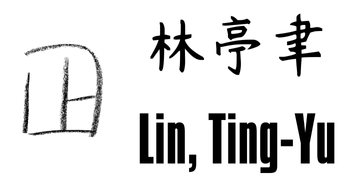Lim Ting-Ut’s practice within ambiguity and obscurity
Annette An-Jen Liu
January 2023
“Bark! Bark! Hello! This is lucky. It’s true.” showcased Lim Ting-Ut’s most recent body of work: 15 black-and-white ink paintings made from paper collage, presented on wood panels. Delicately assembled and beautifully crafted, the mixed-media paintings reveal layers of tissue paper that has been carefully stripped, dyed, and pasted on top of one another. Lim’s process is evident in the texture of these paintings, with its translucent quality highlighted through the shades of grey outlining the compositions.
With a focus on form and balancing visual arrangements, Lim produces whimsical variations of non-figurative shapes. The many descriptive titles—Howling, Dozing Off, The Cornered Beast is Still Fighting—illustrate this study, and the only color and non-wall piece, So Far So Good, clearly demonstrates his intuitive approach to collage: one centering around an “organic development” of experimenting with hand-crafted materials and collapsing unique layers. Floating silhouettes of animals, eyes, and a ladder found in several paintings hint at surrealist narratives.
Exhibited in a rooftop dwelling on the fifth floor of artist-run space WeiMingMing, Lim’s new series visually corresponds well with the architecture. The concrete walls of peeling paint and exposed ceiling characterize the gallery, with features opposite that of a traditional white cube. Lim makes use of this, displaying his paintings against rusted metal railings and cracked wall surfaces, drawing parallels to the remnants of time visible in both the gallery's structure and within his own work.
The largely monochromatic series developed out of a formative spring trip to New York City in 2022 (the playful, nonsensical exhibition title is inspired by stories he heard during his travels). Lim speaks fondly of this time, reflecting upon the city’s vibrant diversity and the countless exhibitions he saw, where each encounter expanded his understanding of what a painting practice can look like. After seeing the Guggenheim exhibition, Around the Circle, artist Wassily Kadinsky became a major reference for his exploration of geometric form, line, and color. Lim came back to Taiwan inspired to discover a new visual language for himself and emboldened to lean into material experimentations.
Lim has worked as an artist for over a decade—longer if you count his role as an assistant to his brother, the painter Lin YiHsuan, who is nine years his senior. In art school, Lim first dabbled in film and photography before coming to painting, a decision resulting from feeling unfulfilled by the image-based mediums’ precision and predetermined look. Differentiating himself from his brother, who Lim describes as having a purest “emotional” approach to painting, Lim emphasizes his interest in craft and in incorporating varying materials. His first oil paintings in color were abstract surface experiments on linen and coffee bags, others were non-figurative symbols, painted on paper and collaged together in self-made steel frames.
While there is a stylistic jump between these earlier works and the ones in “Bark! Bark! Hello! This is lucky. It’s true.,” Lim considers his evolving practice as continuing to exist within a liberating space of ambiguity. The arrival to his current method of working with ink and paper was also peculiar and unexpected, involving initial play with oatmeal and tissue paper during the then-mandatory period of quarantine when he got back from the US. Looking back at these beginnings, Lim likens the development of his process to that of knowledge systems such as astronomy, stemming from obscurity but informed by historical and environmental contexts.
Ahead of a year-long trip to Australia, Lim has bought different kinds of paper and wheat paste powder to continue refining his craft. Having his mediums and skills in a new cultural context will certainly stimulate his growth as an artist, in a way which reminds us of the importance of active engagement with the world.
